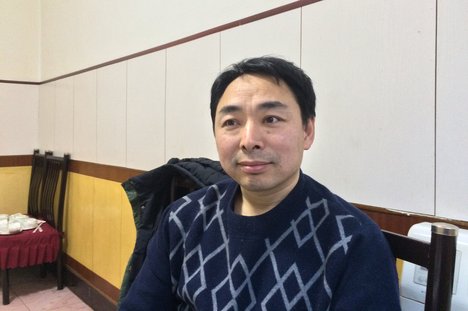Video interviews related to the New York Times article quoted below.
(p. B1) The scenic and narrow lane that leads to Robert Hodge’s sugar camp is surrounded by a cat’s cradle of plastic piping that draws sap from 12,000 trees. At the end of the lane, a ramshackle hut contains reverse osmosis pumps to concentrate the harvest. A stainless steel evaporator, about the size of a truck, finishes the conversion into maple syrup.
Just one thing is missing: the maple syrup.
For weeks, security guards, hired by the Federation of Quebec Maple Syrup Producers, kept watch over Mr. Hodge’s farm. Then one day, the federation seized 20,400 pounds of maple syrup, his entire annual production, worth about 60,000 Canadian dollars, or nearly $46,000.
The incident was part of the escalating battle with farmers like Mr. Hodge who break the law by not participating in the federation’s tightly controlled production and sales system.
“It’s a good thing that I’m not 35, 40 years old because I’d pack up all my sugar equipment that’s movable, and I’d go to the United States — oh yes, in a minute, in a minute,” said Mr. Hodge, 68.
While many Americans associate Vermont with maple syrup, Quebec is its center. The province’s trees produce more than 70 (p. 4) percent of the world’s supply and fill the majority of the United States’ needs. The federation, in turn, has used that dominance to restrict supply and control prices of the pancake topping.
. . .
Mr. Hodge is similarly intransigent. At this point in the season, Mr. Hodge would normally have sold his syrup, turning his attention to his cattle and other crops. But this year he had nothing to sell. He contends that farmers should be allowed to set their own level of production and sell directly to large buyers, regardless of what the law says.
“They call us rebels, say we’re in a sugar war or something. I’ve heard rumors of that,” said Mr. Hodge, at his farm in Bury, Quebec.
“Yeah, I guess you could call it that.”
Across the table, Whitney, his 20-year-old daughter, who also farms, looked up from her smartphone and interjected.
“A war over maple syrup, like how pathetic can you get?”
. . .
Prices are set by the federation, in negotiation with a buyers’ group. The federation holds most of the power, given that it controls a majority of the world’s production.
Such domestic systems are facing scrutiny in a global marketplace. One major hurdle in the talks over the Trans-Pacific Partnership, a major trade deal with 12 countries, has been Canada’s refusal to dismantle a similar quota system for dairy and poultry farmers.
Maple syrup buyers, including some American companies, have bristled at the federation’s tactics. They appreciate the steady supply. But some have taken issue with the aggressive enforcement efforts, including large fines for companies buying from Quebec producers outside the system, and the rising prices.
The situation, critics contend, could prompt buyers and producers to shift to the neighboring province of New Brunswick, and Vermont in the United States. Or consumers might simply pour artificial syrup instead.
“People will always eat chicken,” said Antoine Aylwin, a Montreal lawyer who has represented several buyers in disputes with the federation, including some American companies. “But they will not always eat maple syrup if they think that they can’t afford it.”Defying the Law
Mr. Hodge was shocked in 2009 when the federation demanded 278,000 Canadian dollars for not joining the system and for selling directly to a buyer in Ontario.
Most years, Mr. Hodge’s sugar bush grosses about 50,000 Canadian dollars. About half the money goes to cover electricity for the vacuum pumps and oil for the evaporator.
“I’d have to give them 100 percent of what I gross for five years, and I would have nothing for production cost,” he said. “That just ain’t possible.”
Mr. Hodge openly acknowledges that he is defying the law. When the quota and centralized selling system were introduced, he continued to sell directly to a buyer in Ontario.
. . .
Like others who have invoked the federation’s wrath, Mr. Hodge’s battle seems as much about principle as avoiding a potentially crippling fine.
In Mr. Hodge’s view, the system’s restrictions are stunting the growth of Quebec’s industry. It is less bureaucratic and less expensive, he explains, for buyers to go to Vermont or New Brunswick. He said that he had no problem with paying the federation its 12 cents a pound tax for various services, like promoting maple syrup in new markets, particularly in Asia. But he will not adhere to the quotas.
“Well, I don’t accept the system because I don’t believe in not being able to sell our product,” he said. “We just think that that product is ours. We bought the land. We’ve done all the work. Why should we not be able to sell our product the way we want as long as we legitimately put it on our income tax?”
That’s a question that exasperates Mr. Trépanier of the federation. While Mr. Trépanier studiously avoids calling the organization a cartel, he has described it as the OPEC of maple syrup in the past, referring to the group of oil-producing countries. The system, he said, is doomed to collapse without production discipline.
For the full story, see:
IAN AUSTEN. “The Maple Syrup Mavericks.” The New York Times, SundayBusiness Section (Sun., AUG. 23, 2015): 1 & 4.
(Note: ellipses added.)
(Note: the online version of the story has the date AUG. 20, 2015, and has the title “Canadian Maple Syrup ‘Rebels’ Clash With Law.”)



